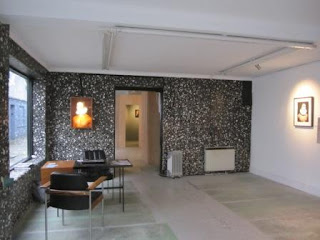Now the blog is a new thing to me and I am a bit wary of how it may interfere with this creative process, more specifically my breakthrough, by analysing and putting into writing - formalising if you like my thinking before it has passed the seed-corn stage. In the past I have let the thinking quietly get on with it in the background. Given it space to form in its own time. But being artist in residence this year I feel I ought to be a bit more open. I'm not sure I can be completely open. As Hereward Lester Cooke said in 'Painting Techniques of the Masters', 'The creative process does not lend itself to chaperone". So I am happy to share some of my current thinking but not the work yet! Hence why no pictures on the blog at the moment (other than a few tentative Tim Knowles inspired tree drawings - but I am working on building a website of my completed work).
Here are a few more nuggets I have found resonating with me this week.
"Read a hundred books, paint one picture" as quoted by Cooke from an old chinese saying which he likes the idea of but admits "it may or may not apply". There is an underlying theme in his book, that is, there are rules and it is useful to know them but you may choose to ignore them or to use them subversively but I think it is important to know they exist so that you can act with intent and integrity.
Which leads me onto another quote "The artist who works without thought is "like a squirrel in a wheel cage" said a seventeenth-century writer on art, and this observation is still true today". I find this one particularly interesting having watched some of the programmes from the Modern Beauty series on the BBC. Specifically 'Where is Modern Art Now?', BBC's Imagine with Anish Kapoor and Mathhew Colling's 'What is Beauty?', they all wrestle with the balance of content and form or put another way thought, craft and aesthetics.
Lastly, from the book by Cooke under the heading "Marriage and the Artist" he notes that around a third of the old masters were unmarried (I thought it would have been higher) but anyway according to Cooke this is "probably a higher percentage than any other profession". Whether it is or not am intrigued with his reasoning of ".....the desire of artists to remain free of everyday routines. The creative impulses are unpredictable, and there is no assurance that they can be dovetailed into domestic life."
Whereas at school and college students do not have the time to sit around waiting for inspiration. There is a process to follow and there are marks awarded for each stage including but not exclusively dependent upon the final outcome.
Regardless to the approach with my personal situation; married with two children as well as the 50:50 teaching:studio time which comes with my artist-in-residence position I best be getting on with it!












